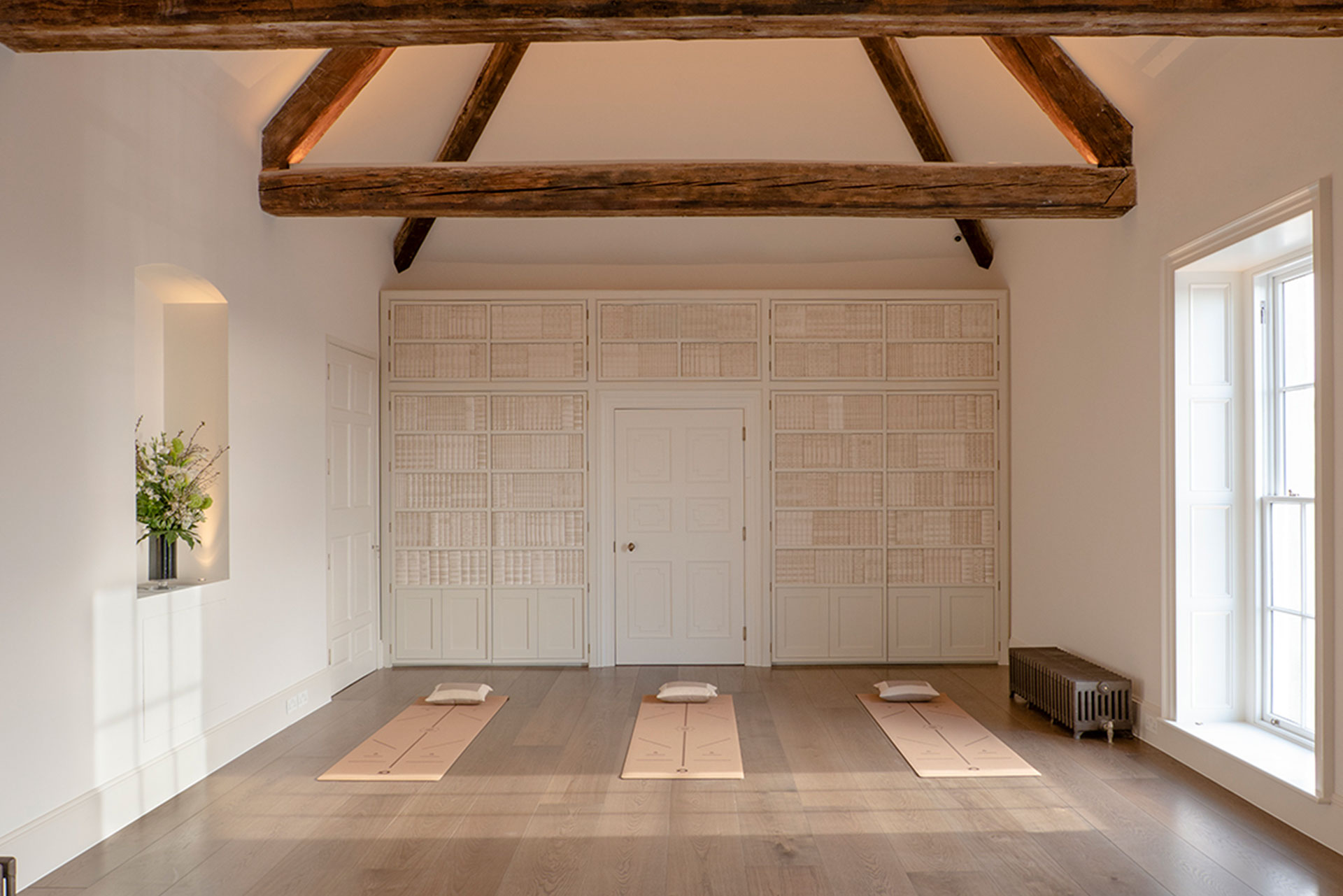Chartered Physiotherapist, Orla Crosse, thinks you can reduce your physical healthcare costs through Yoga.
Yoga, has had great publicity and equally awful publicity over the years. Like anything, it depends on what you want to achieve from doing it. Yoga means different things to different people. To me, as a practicing Chartered Physiotherapist, Yoga is a system of physical exercises. These exercises are suitable and modifiable for all ages and abilities. Yoga poses are basic fundamental movements that people should be able perform free from pain and restrictions.
More and more people are spending long periods of time stationary, while at work and at home. Generally, people don’t regularly move their bodies through their full range of motion. Movements such as: pulling your heel to your bum, rotating the spine, or even simply reaching the arms overhead. Essentially, the phrase ‘If you don’t use it, you lose it’ applies to our bodies. If we continually use our bodies in one particular way, e.g at a desk, training for a race, or distance cycling, certain areas become stronger while other areas get left behind and in some cases become weak and dysfunctional. This leads to an imbalance which causes problems. The first symptom of which is usually pain. Once a problem is identified, there is a lot you can do about it. We tend to blame lack of time as the biggest obstacle to helping ourselves, but perhaps it’s hard to find reliable, medically sound information that is easily understood and can be put into practice.
Much of what is published in relation to mobility patterns or yoga on social media I wouldn’t share with people on my own social media accounts. The advice is rarely evidence based or even scientifically accurate. This is as a result of the abundance and variety of Yoga classes available, paired with several types of ‘Yoga teacher’ qualifications. However, if you do your research, Yoga and Movement re-education have positive health benefits that will wish you found a lot earlier!
I found Yoga, or Yoga found me many years ago, while practicing physiotherapy in Australia. My first impression was how similar the yoga poses were to the exercises I was prescribing in clinic to help my patients recover from pain and injuries: basic, clean, simple, weight bearing movement patterns. It was a Hatha Yoga class.

Over the years I experienced many different types of classes depending on where I was living. I tried Ashtanga, Iyengar, Anti-gravity, Vinyasa, Yin, Bikram, Kundalini, ‘Hot’, ‘Power’ to name but a few. I was always critiquing the effectiveness and biomechanical accuracy of the style of Yoga being taught. As a physiotherapist, Hatha Yoga is the one that resonated with me most. There’s nothing too extreme with it and it safely challenges every movement pattern we have.
It wasn’t until I begun to take my running more seriously that I started to take Yoga seriously. While training for a marathon and several adventure races, I noticed my knee and upper back getting sore related to the heavy training load. When I committed to doing a handful of poses regularly pain vanished. Physically I felt great. Without it, the pain reappeared.
I was convinced of the benefits of Yoga. I already knew that many of my patients who presented to my clinic have movement issues related to their pain and injuries: a stiff area in the back, calf muscle weakness, a lack of hip mobility or muscle strength. Over the years I have seen people spend their money on return visits to the physiotherapy for reoccurring issues. As they couldn’t maintain their motivation to do the rehabilitative exercises beyond a few weeks, their problem either persisted or re-occurred. In my opinion many of these visits could have been avoided if patients had an overall movement programme to follow routinely. This is where tailored Yoga programs can be of use.
Pain and Injuries may never have occurred if people had more balance between strength and mobility. Through Yoga, mobility and strength patterns throughout the whole body are targeted. Not to mention the importance of the integration of the breath with movement which I will address in a future article.
I often get asked by patients “Why can’t I be completely rehabilitated in a couple of physio sessions?”. Sure, an acute injury can be well managed in a few sessions. But I see more and more chronic injuries which have developed over many years without being diagnosed. The conversation often begins as follows:
Physiotherapist: ‘How long has your back been causing you pain?’
Patient: ‘Oh, about 2/3 years!’.
These symptoms can take months to resolve with physiotherapy sessions alone. Yoga can be used as an excellent adjunct to physiotherapy to teach people the fundamental movement patterns their body requires to fully recover. Within physiotherapy sessions it is not possible to teach a beginner 6 week course of movement pattern re-education. As a Chartered Physiotherapist I believe that in the long term, it is much more effective to teach someone to develop lifelong healthy movement patterns through Yoga, with the aim of preventing reoccurrence and reducing injury risk. Another advantage of Yoga is that your body awareness improves over time, meaning you and your instructor will identify a problem area before it becomes a significant issue. Having a Physiotherapist as your instructor is beneficial here.
There is no data on the physiotherapy related healthcare costs to the public in Ireland. However to give you an idea of the cost effects of common injuries: In the US kneecap related pain accounts for up to 7.3% of all insurance claims. And according to the Medical Expenditure Panel Survey, about 100 million adults in the US are affected by chronic pain, conservative estimates for the costs are from $560 to $635 billion annually.
In Ireland, everyone knows someone who has been compromised due to pain. In addition, we are living longer lives due to advances in medicine and healthcare. Achieving your optimum mobility and strength is a key facet to living a healthy life.
If you are interested in learning more about how to effectively move to prevent injury or alleviate persistent or chronic pain, then Yoga taught correctly or my own brand of Performance Yoga, as an adjunct to treatment can help. How much practice you do is flexible. With the help of your instructor, you will become more aware of your physical body in general. Studies have shown that the additional benefits of practicing the physical poses will become evident over time, such as improved sleep patterns and reduction in stress levels.
Please note that any current injuries and medical issues should be assessed by your local GP or Chartered Physiotherapist before commencing any Yoga program.
Further information is available at:
You Tube: Performance Yoga Ireland
Twitter: @PerformanceOrla
Facebook: Performance Yoga Ireland
Articles Referenced:
Demographic and epidemiological trends in patellofemoral pain. Glaviano et al 2015. International Journal of Sports Physical Therapy.
Relieving Pain in America: A Blueprint for Transforming Prevention, Care, Education, and Research. Appendix C. The Economic Costs of Pain in the United States. Darrell J. Gaskin, Ph.D. and Patrick Richard, Ph.D., M.A.2008-2010.



